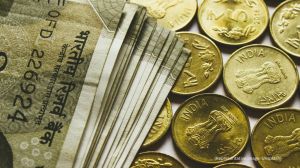Gold the most preferred investment
Precious metals are becoming truly precious as they near historical highs. This time,though,the scenario is different. Gold,the most actively monitored commodity,has broken though its historical high,closing at $1,006,the highest close on the Comex for the near month contract.
Precious metals are becoming truly precious as they near historical highs. This time,though,the scenario is different. Gold,the most actively monitored commodity,has broken though its historical high,closing at $1,006,the highest close on the Comex for the near month contract. Gold is again being viewed as a safe haven and safe money is flowing in its direction.
Though there are many views on golds future,we are bullish on gold (and have been of the view for some time now). Compared to year-to-date returns across asset classes,gold dominates,returning 17.34%,whereas the Dow Jones is down 7.78%,crude is down 25.41% and US treasury is down 1.51%.
Another view is that why not invest in silver for its better recent returns. A valid question given that silver prices shot up 23% in the last month,whereas gold prices rose just 8.32%. Over the last 12 months,silver has appreciated by 46.5%,whereas gold has risen only 17.64%.
So what differentiates these two precious metals and why the divergence in their prices? The answer lies in the usage patterns of these precious metals. Gold is primarily used to store wealth,while silver is more an industrial commodity than precious metal. This basic difference drives their performance,though they do tend to move in the same direction most of the time. In a high growth environment,when GDP and manufacturing growth is high,silver tends to outperform gold. During periods of deflation,golds ability to protect wealth gives it an edge.
Another way to judge which precious metal would provide better returns is to look at the gold-silver ratio. This ratio is arrived at by calculating how many silver ounces are required to buy one ounce of gold. One year ago,the gold-silver ratio was 80,meaning that 80 ounces of silver was equal to 1 ounce of gold. The ratio is now 59,closer to its historical average.
In addition,silver has dominated over the past six months and has outperformed gold. Furthermore,base metal prices,which are indicators of industrial activity,have already risen significantly from their lows supported by Chinas inventory build up. This Chinese story may come to an end soon as the inventory overhang could depress further buying,which could lead to a short-term correction in base metals and in turn would impact silvers performance.
All the above reasons suggest that gold should be the preferred investment choice among precious metals at this point in time. We maintain our bullish view on gold with a target of around $1,250 by March 2010 (Rs18,000-18,300) and suggest accumulation on every dip.
Simultaneously,base metals witnessed some selling pressure last week after touching highs during the start of the week. Prices fell as Chinas imports dropped,its exports declined,and global reserves grew. The gains in overseas prices slashed arbitrage trading.
Chinas latest trade data also put pressure on copper and other base metals prices. Though tightening regulation on lead smelters by China is bullish news,we believe it has been blown out of proportion. We are at a point where industrial production is strong when compares to the worst figures of 2008 in many countries,but many manufacturers are well-stocked and are slowing their purchases. On the economic front,data such as the German PPI and the UK budget deficit have not made any major impact on metal prices.
Overall,the backdrop for metals looks quite supportive with firmer equities and a weak dollar,but in recent days the link with the dollar seems to have broken down and it does look like there is some selling going which dip buyers have to absorb.
Metals,however,do seem to be undergoing some distribution on the charts as metal prices are not joining in on this latest run higher in equities and seem to have disengaged from recent dollar weakness. Among metals,nickel seems to have broken down; aluminum is following its lead and may stay positive for a few more sessions,while the rest are holding just above support levels.
(The writer is executive director,Anand Rathi Commodities )



- 01
- 02
- 03
- 04
- 05




























